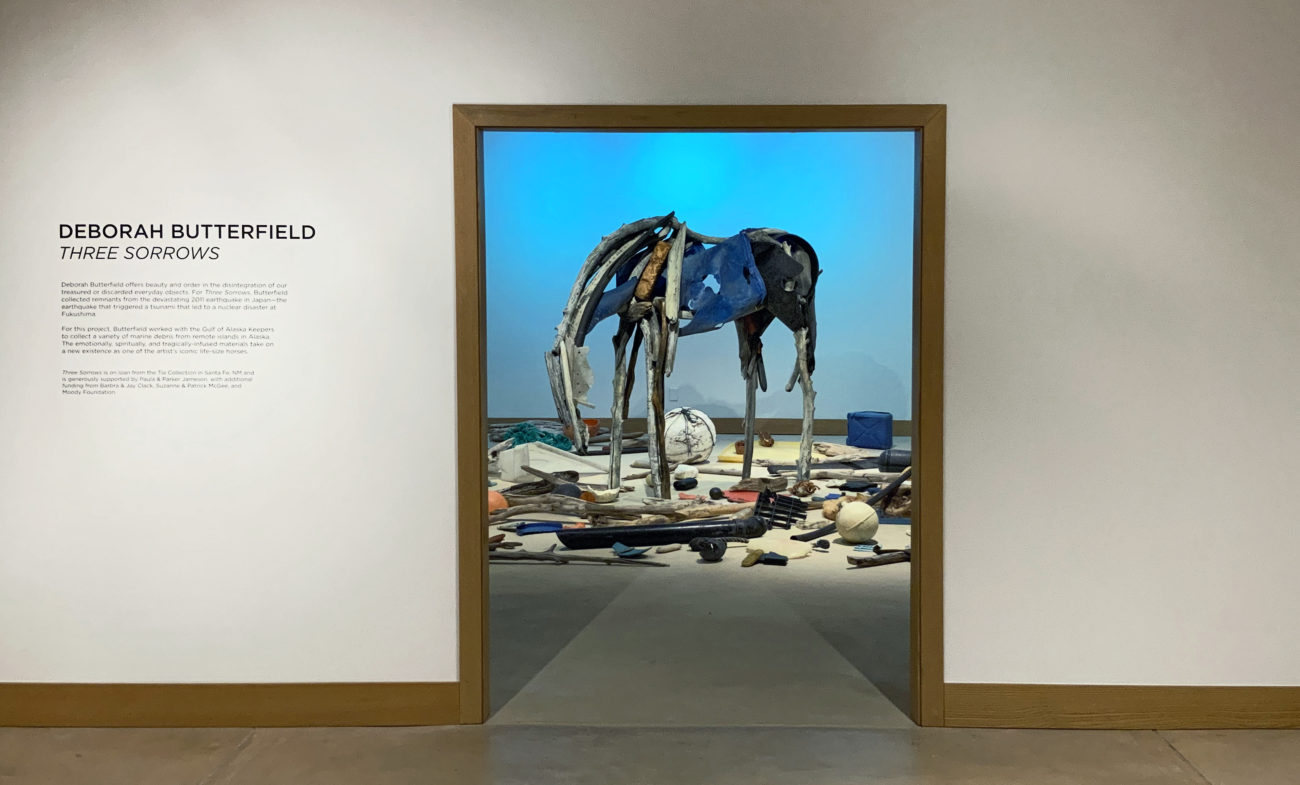Three Sorrows (quake, tsunami, meltdown from Gretel Ehrlich’s Facing the Wave), 2016
Among scattered plastic, foam, wood, wire and other ocean detritus stands an 81 inch tall horse by Deborah Butterfield. Three Sorrows (quake, tsunami, meltdown from Gretel Ehrlich’s Facing the Wave) is currently on exhibit in Albany, Texas at the Old Jail Art Center, in conjunction with their 40th anniversary celebration.
Butterfield’s earliest works were equine compositions which used natural elements – wood, clay and stone – as a way of melding the human, animal and natural worlds. Since the 1980s she has included metal and bronze processes in her sculptures. Butterfield worked at the Walla Walla Foundry in Washington state and used lost wax technique to cast the driftwood for Three Sorrows (quake, tsunami, meltdown from Gretel Ehrlich’s Facing the Wave) while incorporating the actual debris from the 2011 tsunami in Honshu, Japan to create this unique figure of a horse.
Her patina of rust and paint is applied to the surface to restore the natural color and values of the objects. This piece draws its inspiration from Ehrlich’s book, Facing the Wave, as an interpretation of reassembling the devastation of the massive tsunami in northeastern Japan which created, among many other catastrophic outcomes, huge amounts of floating wreckage, that traveled across the north Pacific to the coast of Alaska. Butterfield was fortunate to harvest some of the debris for the creation of Three Sorrows (quake, tsunami, meltdown from Gretel Ehrlich’s Facing the Wave).
We are very excited to have this partnership with The Old Jail Art Center, our second opportunity to work together.
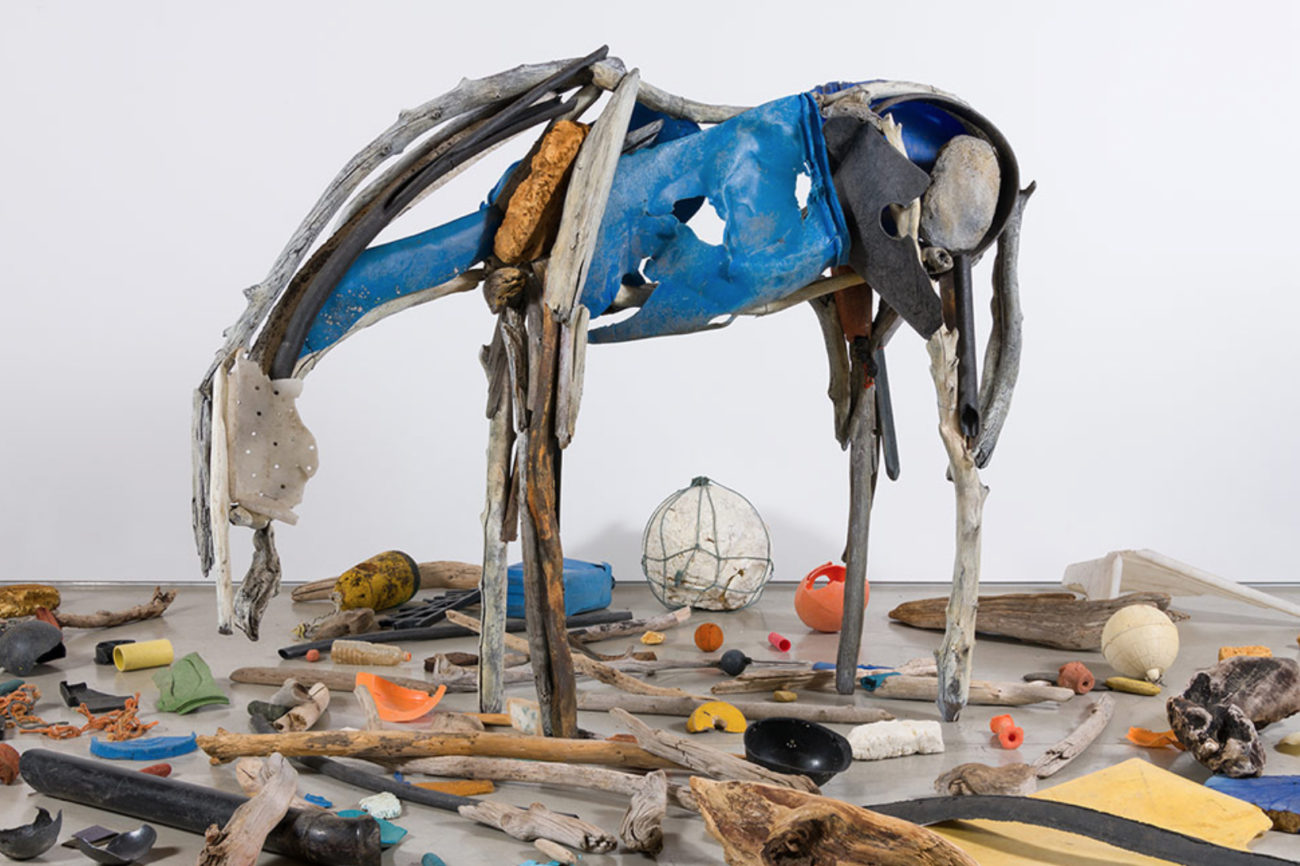
Facing The Wave: A Journey in the Wake of the Tsunami
An excerpt from the book by Gretel Ehrlich
On March 11, 2011, Japan’s earth-alter broke. The descending oceanic plate – a slab of lithosphere – slid under the overlying plate that carries the island of Honshu. Pulling and grinding, the subduction zone was pulverized. Its topmost plate bulged and dropped, and a rupture occurred: an undersea rip, 6 feet across, 310 miles long, and 120 miles wide.
Friction is stress; stress is energy. The earth moved. A wave was born. Three Sorrows: quake, tsunami, meltdown. In the quake’s “seismic moment,” the total energy released was two hundred thousand times the energy at the earth’s surface, equal to six hundred million times the energy of the bomb dropped at Hiroshima. In six shaking minutes the northeastern coast of Japan was torn off its roots with an undersea roar that could be heard on hydrophones in Oregon.
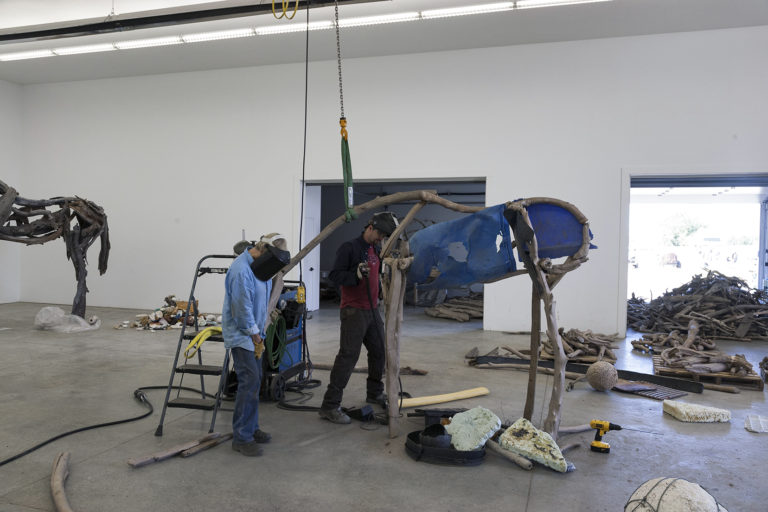
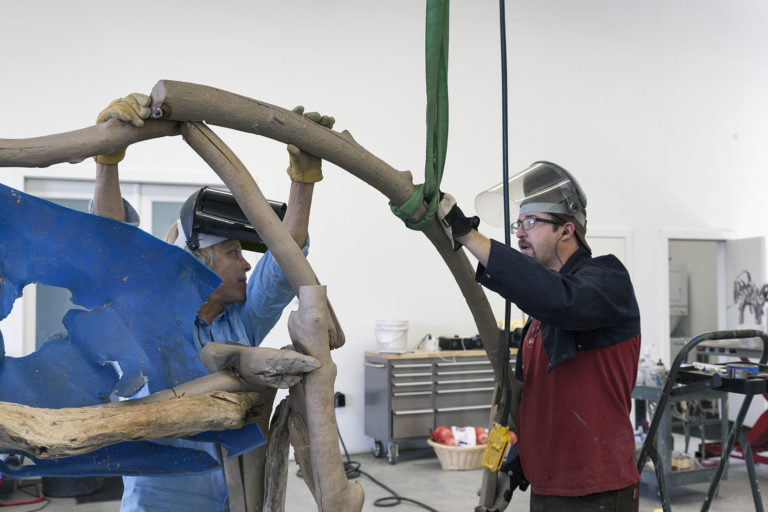
Three Sorrows (quake, tsunami, meltdown from Gretel Ehrlich’s Facing the Wave) at the OJAC
– Patrick Kelly, The Old Jail Art Center, Executive Director and Curator
A strong work of art does not reveal itself all at once, but rather in increments, through various means and contexts. Such is the case for Deborah Butterfield’s Three Sorrows (quake, tsunami, meltdown from Gretel Ehrlich’s Facing the Wave) on view at The Old Jail Art Center in 2020.
While selecting works for our 2019 Allied: The Tia and OJAC Collections exhibit that paired The OJAC’s permanent collection with works from TIA collection, it was obvious that the Tia Collection’s Butterfield sculpture would make an impactful installation for our visitors at some point, though the exact time to do so was left unresolved.
The superficial reasons for its display were obvious—the region of Texas where The Old Jail Art Center is located provides perfect context for the primary subject of the installation. The horse has been, and is, an important part of the history of our region—an invaluable asset to early European explorers, Vaqueros, the Comanche, Anglo settlers, and modern cowboys. What better way to provide visitors a pathway into the deeper content offered by this work?
The appropriate time and context became apparent while curating The Ruby Portfolio—a 2020 permanent collection exhibition celebrating The OJAC’s 40th anniversary. In the museum’s humble beginning, a sizable number of ancient Chinese tomb figures and Japanese porcelains were gifted by two of the founders. These, along with modern and contemporary American and European works, make up the eclectic core collection. It became clear that Three Sorrows (quake, tsunami, meltdown from Gretel Ehrlich’s Facing the Wave), installed in an adjacent gallery, would be a subtle yet engaging reference to the eastern and western cultures represented in the core collection.
Though significant, these justifications for borrowing and exhibiting the work were secondary to the certainty that Three Sorrows (quake, tsunami, meltdown from Gretel Ehrlich’s Facing the Wave) would offer a powerful, emotional, and thoughtful experience for visitors to our institution.
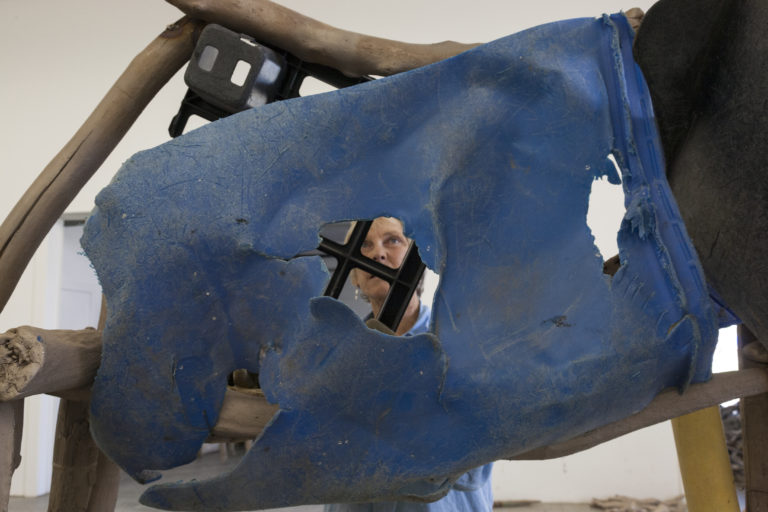
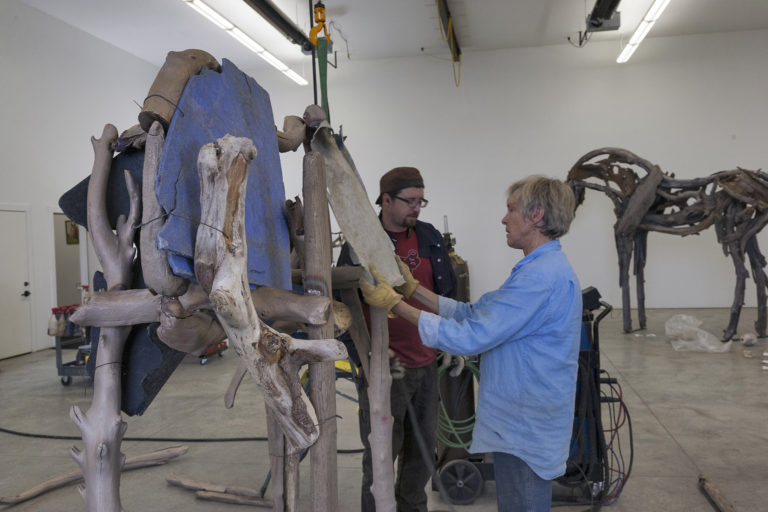
In this particular [piece] with a blue fishing barrel torn into pieces, I see it as an ocean and continents, as just a very literal metaphor for what we've done to the Earth. A lot of the debris was very specifically from the tsunami in Japan five years (ago.) Some of it was unbearably poignant, helmets with huge, crushed dents in them and baby shoes, and toothbrushes and little combs. It was so personified, so narrative that I made kind of a little shrine for the material, to keep the work I put in this piece more abstract, because I feel this glittering beauty of destruction.
OJAC installation photo and video: Patrick Kelly
"When I walk past my pile of junk, I am inspired by the things I see. It has to do with finding and identifying objects of interest that I can work with. Working with junk is a way of recognizing a quality of line and appropriating it to my sculpture."

